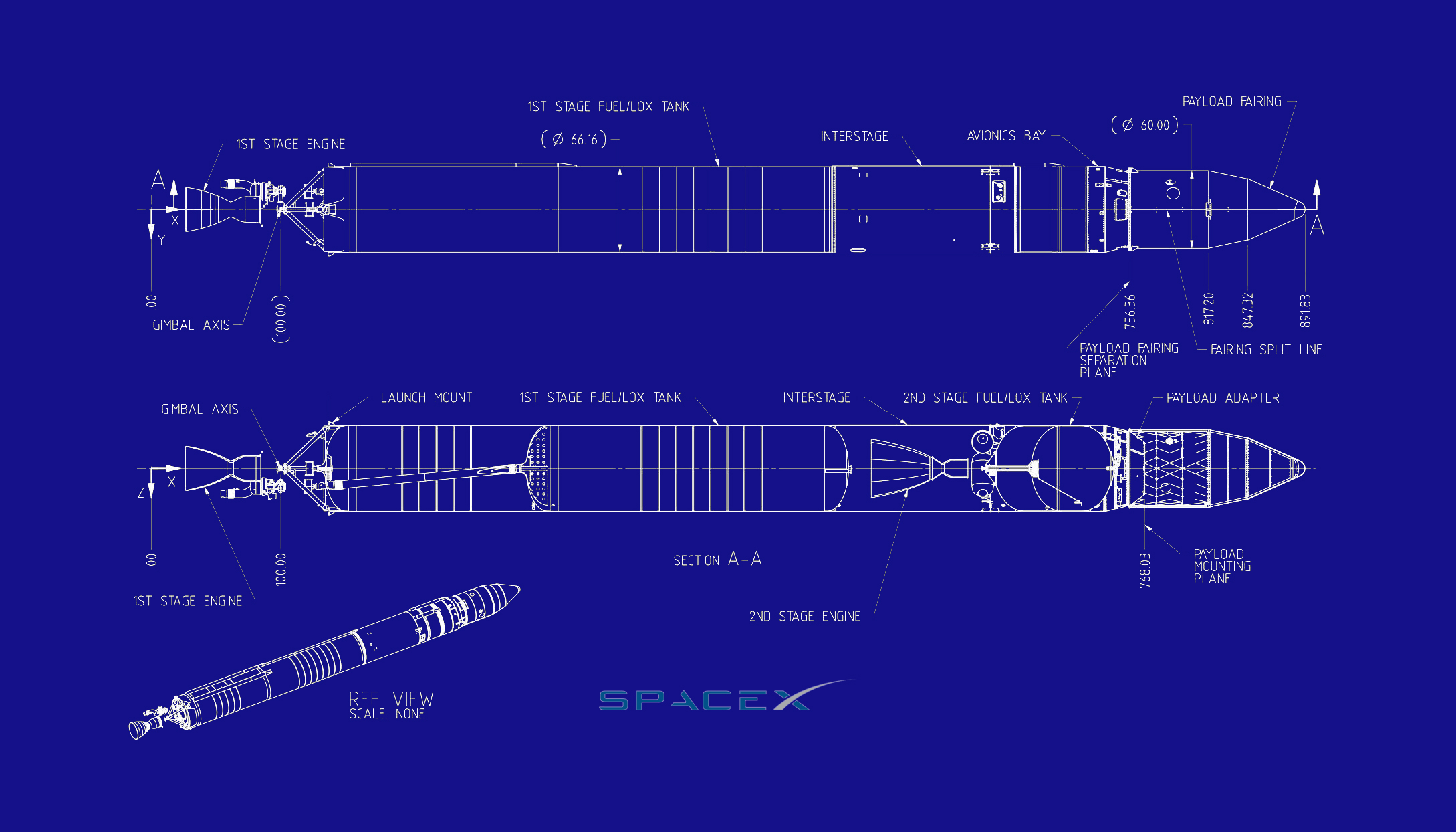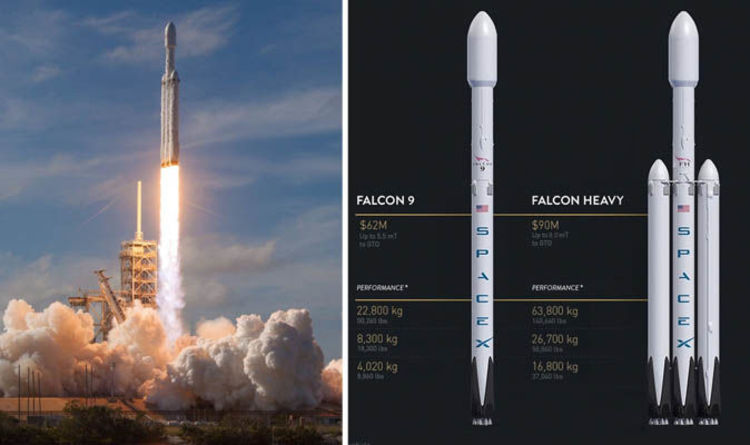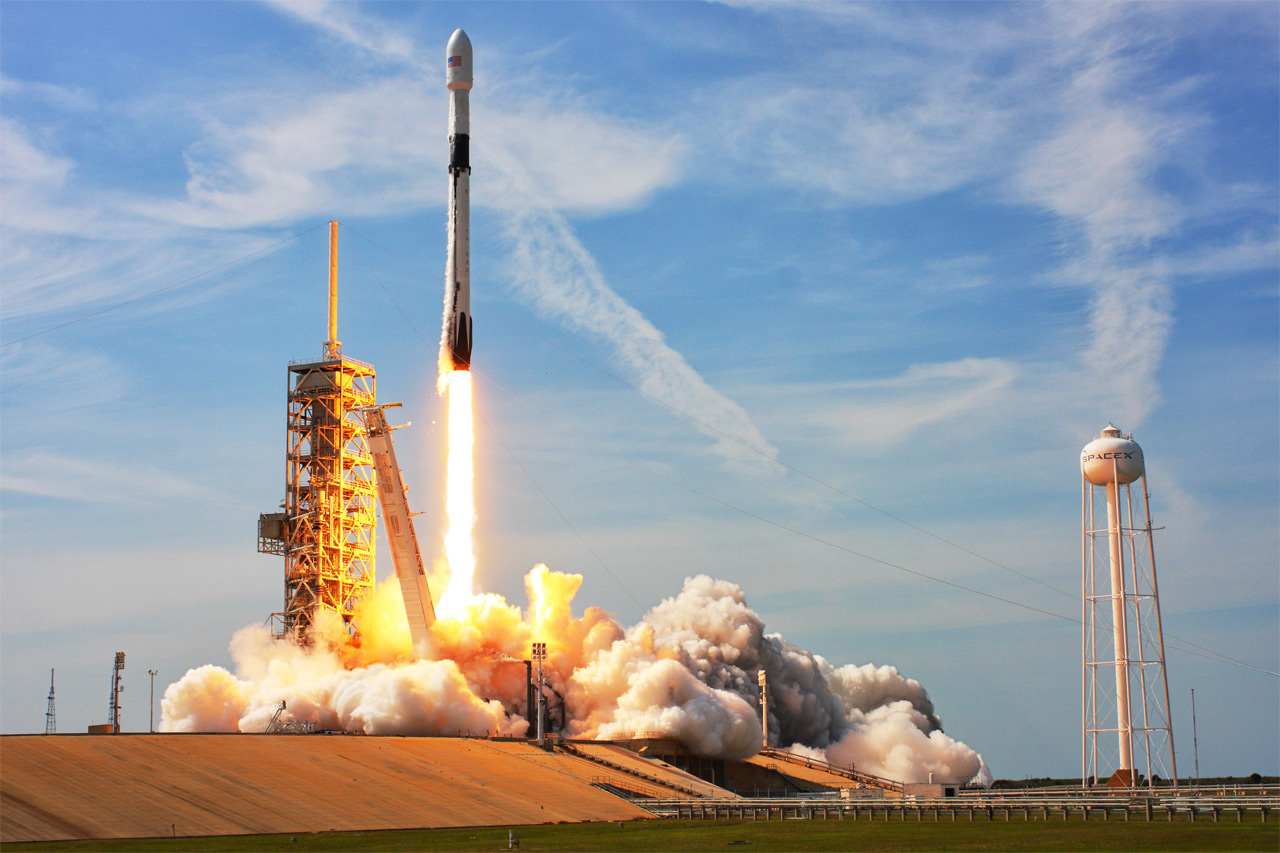Elon Musk founded SpaceX – Space Exploration Technologies – and jumped into the rocket science, he promised reusability, lower launch costs, and easier access and commercial flights to space. Over the last few years, the company has taken amazing steps to ensure on that promise, which accelerated after the success of its Falcon 9 rocket. Elon Musk has likened single-use rockets to single-use airplanes. If an airline had to scrap every Boeing 777 after every flight, then the cost of flying would be very expensive for the average traveler. But airplanes aren’t for one time use, they get refueled for another flight and the process repeats several times until airplanes complete their cycles recommended by a company(1 cycle comprises of 1 takeoff and 1 landing). If a rocket can be refueled like an airplane, then the enormous cost of spaceflight could drop to a fraction of what it is now. And imagine the imitation of that!
Falcon 9 is a two-stage-to-orbit medium-lift launch vehicle designed and manufactured by SpaceX to launch satellites and crewed spacecraft into orbit. It is powered by Merlin engines, also developed by SpaceX. Its name is from the Millennium Falcon and the nine engines of the rocket’s first launch stage. Moreover, it stands 69.9 meters tall, weighs 549,054 Kg, and generates 7,607 KiloNewtons of thrust at take-off, which can send 22,800 Kg payload into low orbit around the Earth. Alternatively, it could send 8,300 Kg to Mars, although it hasn’t launched anything to the Red Planet just yet and Mars is SpaceX’s ultimate goal – Elon Musk kept no secret that he wants to be the one to land humans on our planetary neighbor.

Eventually, SpaceX sent 40 Falcon 9 missions into Earth orbit. The rocket made history in 2012 when it became the first privately launched vehicle to successfully send a resupply mission to the International Space Station (ISS), and has since added reusability to its roster. This marks another step towards SpaceX’s goal of sending humans into orbit from American soil. All in all, SpaceX is positioning itself to be a leading force as we enter the new era of commercial spaceflight. Which is something also opposed by Neil Armstrong, 1st Human who landed on a Moon?
In April 2014, SpaceX signed a 20-year lease contract with NASA to use its launch pad 39A, the very same launchpad from which every Apollo mission (other than Apollo 10) and a host of Space Shuttle missions launched. To support the Falcon 9 launch, SpaceX had to alter and custom builds the pad. It refurbished the sound-suppressing deluge system, which uses water to protect the rocket from its own acoustic energy at the moment of launch. It also replaced electronic components, power and plumbing lines, and upgraded the liquid oxygen storage system that is used to fill the rocket’s tanks before launch.
They also made changes to the original engine layout of Falcon 9. The metal Octaweb layout that houses the Merlin engines is vital to the Falcon 9’s first stage. Earlier versions of the rocket had nine engines arranged in three rows of three. With the Octaweb layout, it has now eight engines clustered in a circle around a central one. The different engine arrangement is more than just the artistic look. The Octaweb reduces the length and weight of the Falcon 9 thrust structure, simplifying the rocket’s design and assembly. Streamlining the manufacturing process ultimately keeps launch costs down.
An interstage is crucial to any multi-stage rocket. This section connects the first and second stages and also houses the engine of the second stage, protecting it during the first phases of flight completes. At the right moment, the interstage separates the two stages, allowing the second stage to fire safely, called the “moment of staging”.
Separating rocket stages can be a tricky business, but the Falcon 9 makes it simpler. While the majority of rockets use a complicated pyrotechnic (with firework display) system of explosive bolts to separate stages, SpaceX uses an all-pneumatic (caused by gases under pressure rather than fire and bursting flames and sound) stage separation system which also mean staging is less shocking to the rocket and cause fewer vibrations and shocks on-board.

As far as power is concerned. The power behind the Falcon 9 is the Merlin engine, which is built in-house by SpaceX. The rocket boasts nine of these engines clustered together in the first stage, while the second stage contains a single Merlin that’s modified to fire in the vacuum of space with propellants as space has no air to provide a reaction to the thrust for propagation, so all rockets contain extra load as a propellant. Merlin engines burn a combination of rocket-grade kerosene called Rocket Propellant 1 and liquid oxygen. On a typical Falcon 9 launch, the first stage engines burn for 162 seconds, and the second stage engine burns for 397 seconds. On other rockets, if an engine fails during launch, the lost thrust can destroy the payload’s chance of successfully reaching orbit and it starts falling back to the ground in projectile trajectory. But the Falcon 9 is designed in accordance with a changing that two of the nine Merlin engines in the first stage can fail and the launch won’t be affected.
Starship, Super Heavy. Raptor is staged combustion, methane-fueled rocket engine under development by SpaceX. So far, the Raptor has not flown and has only been successfully test-fired on the ground. SpaceX has big plans for it. This is the engine that is powerful enough to launch missions to other planets, starting with Mars. The company recently revealed its design for a planned interplanetary spacecraft, and in it currently uses a 42 Raptor engine in the 1st stage of launch to get this heavy spacecraft and its payload off the ground. But before it launches to Mars, Raptor will pay its debut on an upgraded version of the Falcon 9.

In earlier times, the 1st lunch segment or core stage after been dissociated with the main body falls into the ocean. The breakthrough pushed by SpaceX in rocket science is rocket reusability. After its successful landing, the Falcon 9’s first stage is returned to the Horizontal Integration Facility where it can be checked out, refurbished, and ready for another launch. Reusing the stage is much cheaper than building a new one for every launch. The SES-10 mission in March 2017 was the first time in history that a core stage of an orbit-capable rocket has been reused, and the cost was less than half of what it would have cost to build an all-new stage.


























Leave a Reply